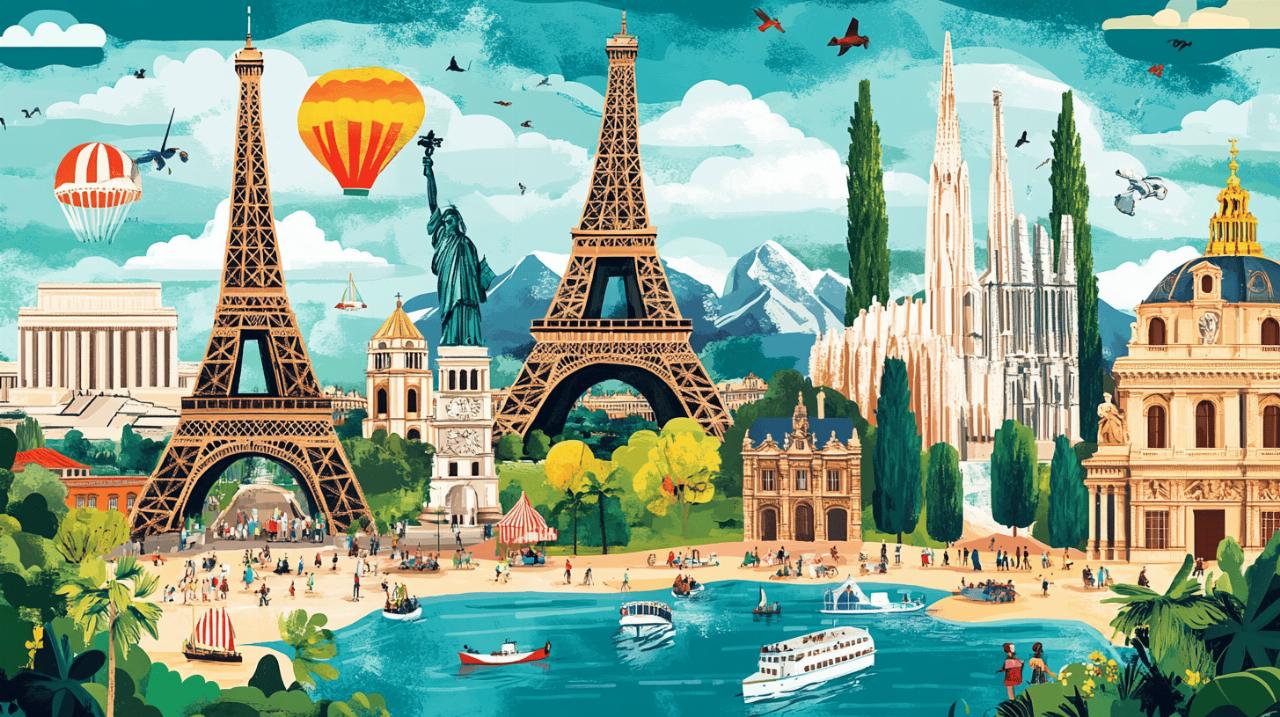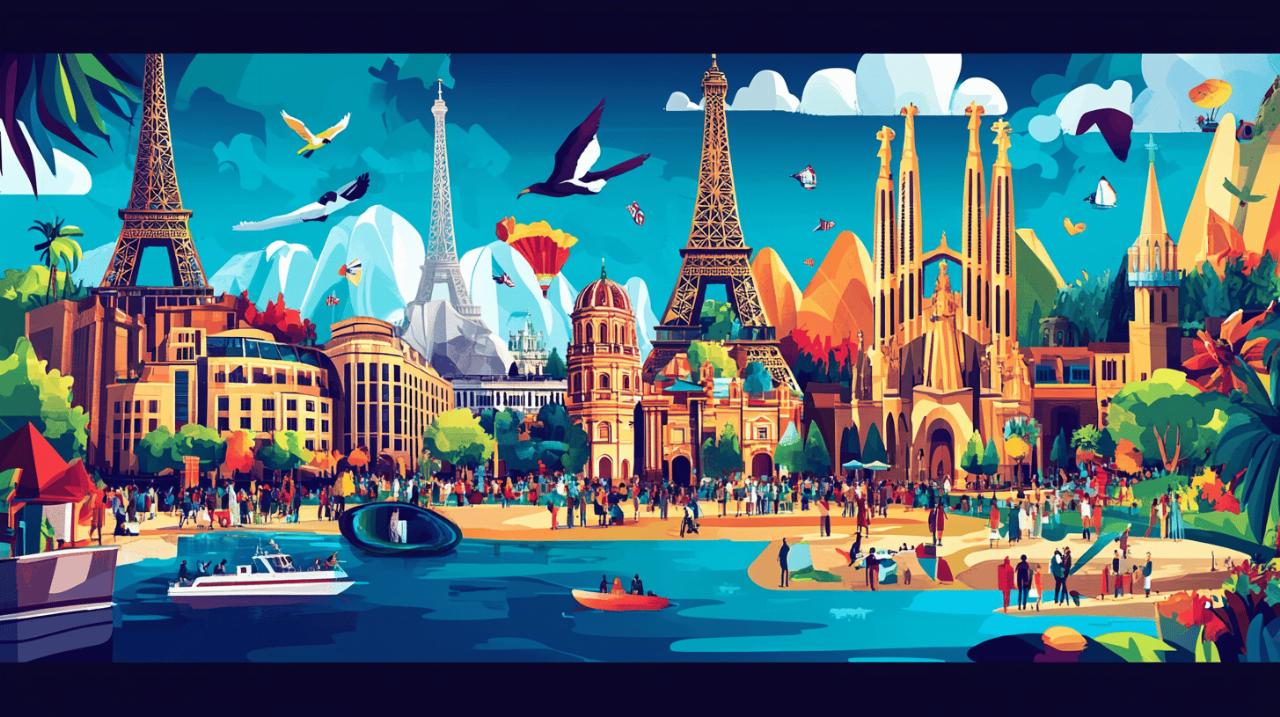
Europe's cultural landscape offers a rich tapestry of experiences for travellers seeking more than just picturesque views. Whether you're planning your first European adventure or returning to explore new corners of this diverse continent, immersing yourself in its cultural offerings provides the most authentic way to understand European heritage. From world-renowned museums to lesser-known historical sites, the cultural experiences available across Europe cater to every interest and travel style.
Planning a meaningful cultural itinerary requires balancing famous attractions with unique, off-the-beaten-path experiences. Many seasoned travellers find that the most memorable moments often come from unexpected discoveries in smaller towns or regional areas. Cuba Travelling enthusiasts might find similarities in how Europe's cultural riches reveal themselves gradually, rewarding those who venture beyond the obvious tourist hotspots with authentic experiences that connect visitors to local traditions and histories.
Unmissable museums and galleries across Europe
Europe houses some of the world's most prestigious art collections and cultural institutions, with capital cities often serving as treasure troves for art enthusiasts. These cultural powerhouses offer windows into European history, artistic movements, and societal developments through carefully curated exhibitions and architectural marvels.
Must-visit art collections in capital cities
The Louvre in Paris stands as perhaps the most famous museum globally, housing over 35,000 artworks including the iconic Mona Lisa. Beyond Paris, Madrid's Prado Museum showcases masterpieces by Spanish artists like Goya and Velázquez, while London's British Museum contains artifacts from civilizations across the globe. For those planning cultural holidays in European capitals, these institutions represent essential stops on any comprehensive cultural itinerary.
Vienna's Kunsthistorisches Museum offers extraordinary collections of European fine arts, while Amsterdam's Rijksmuseum houses Dutch Golden Age masterpieces. The Acropolis Museum in Athens presents artifacts from Ancient Greece with spectacular views of the Acropolis itself. These world-class institutions should feature prominently in travel itineraries focused on European tours with a cultural emphasis.
Hidden gem exhibitions off the tourist trail
While capital cities house famous collections, some of Europe's most rewarding cultural experiences lie in lesser-known venues. The Gulbenkian Museum in Lisbon features an eclectic collection spanning 4,000 years of art history in an intimate setting. The KUMU Art Museum in Tallinn, Estonia, offers insight into Baltic and Soviet-era art rarely seen in Western Europe. These smaller institutions often provide more personal experiences away from the crowds at major tourist attractions.
Regional museums like the Frederic Marès Museum in Barcelona or the Berggruen Collection in Berlin reward cultural adventurers willing to explore beyond the obvious. Such venues frequently offer unique perspectives on local history and artistic movements that complement the narratives presented in larger institutions. Adding these alternative cultural sites to your travel itineraries creates a more nuanced understanding of European artistic heritage.
Immersive historical experiences through European heritage sites
 Beyond traditional museums, Europe offers countless opportunities to experience history through preserved sites and living museums. These locations allow visitors to step back in time, experiencing historical periods through authentic surroundings and interactive elements that bring the past vividly to life.
Beyond traditional museums, Europe offers countless opportunities to experience history through preserved sites and living museums. These locations allow visitors to step back in time, experiencing historical periods through authentic surroundings and interactive elements that bring the past vividly to life.
Ancient ruins and architectural marvels
The ancient world comes alive at sites like the Colosseum in Rome and the Acropolis in Athens, where visitors can walk among structures dating back millennia. The archaeological site of Pompeii near Naples offers an unparalleled glimpse into daily Roman life preserved by volcanic ash. These UNESCO sites provide tangible connections to ancient civilizations that shaped European culture.
Medieval architecture dominates many European historic centers, from the Gothic cathedrals of France to the fortified towns of Carcassonne and Dubrovnik. The Alhambra in Granada showcases Islamic architectural influence in Europe, while Prague Castle represents one of the largest ancient castle complexes globally. These architectural wonders serve as both scenic backdrops and educational venues for understanding European historical development.
Living history museums and interactive experiences
Interactive historical experiences have transformed how travelers engage with European heritage. Skansen in Stockholm, the world's first open-air museum, recreates historical Swedish buildings and traditional crafts with costumed interpreters. The Jorvik Viking Centre in York uses sensory elements to immerse visitors in Viking-age Britain. These living museums create memorable experiences particularly valuable for family adventures across Europe.
Historical reenactments occur regularly at sites like Warwick Castle in England and the Roman Baths in Bath, where actors in period costume demonstrate aspects of daily life from different eras. Hands-on workshops teaching traditional crafts and culinary techniques can be found throughout Europe, from glassblowing in Venice to baking in French culinary schools. These participatory experiences create lasting connections to European cultural heritage that extend beyond passive observation.
Whether exploring world-famous museums or discovering hidden cultural gems, Europe offers endless opportunities for meaningful cultural engagement. By balancing iconic attractions with more intimate experiences, travelers can craft personalized cultural adventures that reveal the depth and diversity of European heritage. As you plan your next European adventure, consider incorporating both celebrated institutions and lesser-known cultural treasures to create a truly enriching journey through the continent's remarkable cultural landscape.



